 1998 Honda Civic VI Wagon Dimensions, Size & Specs
1998 Honda Civic VI Wagon Dimensions, Size & SpecsMeasurements of the 1998 Honda Civic VI Wagon, engineered for optimal performance and comfort
| Dimensions | |
|---|---|
| Length: | 4425 mm174.2 in14.5 ft |
| Width: | 1695 mm66.7 in5.6 ft |
| Height: | 1410 mm55.5 in4.6 ft |
| Trunk Capacity: | 415 liter14.7 cu ft |
| Trunk Capacity (Max): | 1312 liter46.3 cu ft |
| Weight Specifications | |
| Curb Weight: | 1145-1265 kg2524-2789 lbs |
| Maximal permitted Weight: | 1620-1710 kg3571-3770 lbs |
| Tire Specifications | |
| Rims Size: |
|
| Tire Sizes: |
|
The Honda Civic VI Wagon, produced between 1998 and 2000, is a practical station wagon variant of the sixth-generation Civic lineup. Designed to offer a blend of compactness and utility, it features a length of 4425 mm (174.2 inches), width of 1695 mm (66.7 inches), and a height of 1410 mm (55.5 inches), making it well-suited for urban driving while providing ample interior space. The vehicle's curb weight ranges between 1145 kg and 1265 kg (2525 to 2790 lbs), with a maximum allowable weight from 1620 kg to 1710 kg (3572 to 3770 lbs), ensuring a solid balance between performance and efficiency.
One of the standout features of the Civic VI Wagon is its versatile luggage capacity. With rear seats in place, the cargo volume measures 415 liters (14.6 cubic feet), expanding dramatically to 1312 liters (46.3 cubic feet) when the rear seats are folded, offering generous storage for luggage, groceries, or equipment. The car rides on rims sized 15 inches, compatible with tire options such as 185/60 R14, 195/55 R15, and 185/65 R14, providing a variety of tire setups to match different driving preferences.
This model caters to drivers who need the convenience and flexibility of a station wagon without sacrificing the recognizable efficiency and reliability that Honda Civics are known for. Its balanced dimensions and weight make it both maneuverable and spacious, perfect for families or individuals who require extra storage without moving to a larger vehicle class. Overall, the Honda Civic VI Wagon remains a practical and enduring choice in the compact station wagon segment for the late 1990s and early 2000s.
Discover the standout features that make the 1998 Honda Civic VI Wagon a leader in its class
Have a question? Please check our knowledgebase first.
The 1998-2000 Honda Civic VI Wagon measures 4425 mm (174.2 inches) in length, 1695 mm (66.7 inches) in width, and has a height of 1410 mm (55.5 inches). These dimensions make it a moderately sized station wagon suitable for urban and suburban driving. Its length provides ample space for passengers and cargo while maintaining maneuverability. The width allows for comfortable seating without being overly wide, which is advantageous for parking in tight spots or urban environments. The height is typical for a wagon, offering a low center of gravity for better handling and stability.
The curb weight of the 1998-2000 Honda Civic VI Wagon ranges from 1145 kg to 1265 kg (2525 to 2789 lbs), depending on the trim and specific configuration. The maximum allowable weight, or gross vehicle weight rating (GVWR), ranges from 1620 kg to 1710 kg (3571 to 3770 lbs). This weight range reflects the vehicle's structural design to safely carry passengers and cargo. The relatively light curb weight contributes to fuel efficiency and agile handling, while the maximum weight indicates how much additional weight the wagon can safely carry including passengers, cargo, and any extras.
The luggage capacity of the Honda Civic VI Wagon from 1998-2000 is 415 liters (about 14.65 cubic feet) with the rear seats in the upright position. This space is suitable for everyday grocery runs, luggage for a small family, or work-related cargo. When the rear seats are folded down, the luggage capacity expands significantly to 1312 liters (approximately 46.3 cubic feet), allowing for larger items, more cargo, or increased versatility for transporting bulky goods. This flexibility makes the Civic VI Wagon practical for both daily use and leisure activities requiring extra storage space.
Yes, the 1998-2000 Honda Civic VI Wagon will fit comfortably into a standard garage. Given its length of 4425 mm (approximately 4.43 meters or 14.5 feet) and width of 1695 mm (about 1.7 meters or 5.57 feet), the vehicle fits within the standard garage width of around 2.4 meters (7.9 feet). Its length also leaves sufficient space within a typical garage depth of 4.8 meters (15.7 feet) for easy parking and additional room to move around the vehicle or store other items. The vehicle’s height of 1410 mm (1.41 meters or 4.6 feet) is no concern for virtually all home garages.
Compared to the predecessor Civic Wagon (Civic V Wagon), the 1998-2000 Civic VI Wagon features a slight increase in overall length and a more modern, streamlined design. The Civic VI Wagon at 4425 mm length is marginally longer than the previous generation, aiding in increased interior space and luggage capacity. Width and height measurements remain fairly consistent to preserve handling characteristics and urban usability. This evolution offered more cargo volume, improved passenger comfort, and a more contemporary presence on the road. Overall, the Civic VI Wagon provides a more spacious and practical station wagon experience while maintaining the Civic's reputation for reliability.
The 1998-2000 Honda Civic VI Wagon generally aligns with the size of other compact station wagons from the late 1990s. For example, it is similar in length and width to competitors like the Toyota Corolla Wagon or the Ford Focus Wagon. At 4425 mm length and 1695 mm width, it is somewhat more compact than larger mid-size wagons but offers more cargo space than smaller hatchbacks. Its height of 1410 mm is also typical for the segment, providing a low center of gravity and good handling balance. The Civic VI Wagon's luggage capacity of up to 1312 liters with rear seats folded is competitive in its class, making it a practical choice among compact wagons of the period.
The 1998-2000 Honda Civic VI Wagon uses 15-inch rims paired with tire sizes including 185/60 R14, 195/55 R15, and 185/65 R14 depending on the trim and market. These tire dimensions are well-suited for achieving a balance between ride comfort, fuel efficiency, and handling precision. With moderate profile tires, the wagon maintains good grip and absorbs road imperfections effectively, ensuring a smooth ride for passengers. The 15-inch rim size is fairly standard for compact wagons of the era, helping keep unsprung weight low for responsive steering without sacrificing durability.
The relatively light curb weight of between 1145 kg to 1265 kg (2525 to 2789 lbs) combined with compact dimensions such as length and width allow the 1998-2000 Honda Civic VI Wagon to deliver commendable fuel efficiency and nimble handling. The lighter mass reduces engine strain, contributing to improved fuel economy—a valued trait in a compact station wagon. Furthermore, its moderate size facilitates agile cornering and maneuverability in urban and suburban settings, while the vehicle's low height helps maintain stability at speed. Thus, the Civic VI Wagon provides a practical and economical driving experience without compromising comfort or control.
The 1998-2000 Honda Civic VI Wagon is designed to comfortably seat five passengers, with two front seats and a three-person rear bench seat. The interior space benefits from the wagon's extended length, providing adequate legroom and headroom for adult occupants in both front and rear. The wagon-style rear door and configurable rear seats enhance accessibility and versatility of the space. The rear seats can be folded down to increase cargo capacity, improving utility for larger items. Overall, the Civic VI Wagon balances passenger comfort with the practical needs of a station wagon format.
The 1998-2000 Honda Civic VI Wagon introduced several design and feature improvements over previous generations. Its exterior styling is more aerodynamic and modern, with smoother lines and a more contemporary look that appealed to buyers in the late 1990s. The interior also saw enhancements in materials and ergonomics, improving driver and passenger comfort. Notably, the luggage space was expanded, offering about 415 liters with seats up and up to 1312 liters with seats folded, surpassing previous models. Safety features and mechanical upgrades were implemented to meet evolving standards, making the Civic VI Wagon a well-rounded upgrade over its predecessor.
Discover similar sized cars.
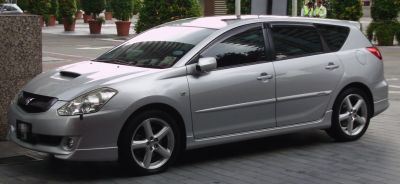
| Production: | 2002-2007 |
|---|---|
| Model Year: | 2002 |
| Length: | 4510 mm177.6 in |
| Width: | 1740 mm68.5 in |
| Height: | 1445 mm56.9 in |
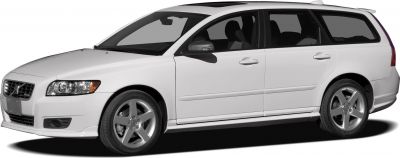
| Production: | 2007-2012 |
|---|---|
| Model Year: | 2008 |
| Length: | 4522 mm178.0 in |
| Width: | 2022 mm79.6 in |
| Height: | 1457 mm57.4 in |
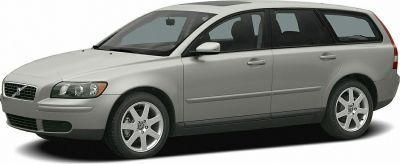
| Production: | 2004-2007 |
|---|---|
| Model Year: | 2004 |
| Length: | 4514 mm177.7 in |
| Width: | 1770 mm69.7 in |
| Height: | 1452 mm57.2 in |
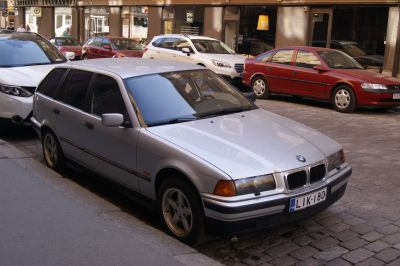
| Production: | 1993-2000 |
|---|---|
| Model Year: | 1994 |
| Length: | 4433 mm174.5 in |
| Width: | 1698 mm66.9 in |
| Height: | 1391 mm54.8 in |
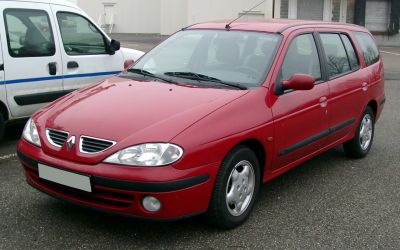
| Production: | 1999-2003 |
|---|---|
| Model Year: | 1999 |
| Length: | 4437 mm174.7 in |
| Width: | 1698 mm66.9 in |
| Height: | 1420 mm55.9 in |
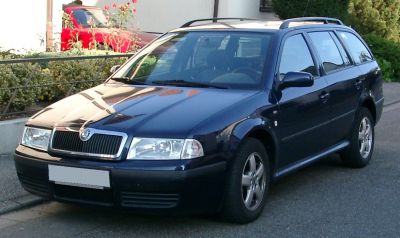
| Production: | 2000-2010 |
|---|---|
| Model Year: | 2000 |
| Length: | 4513 mm177.7 in |
| Width: | 1985 mm78.1 in |
| Height: | 1444-1481 mm56.9-58.3 in |
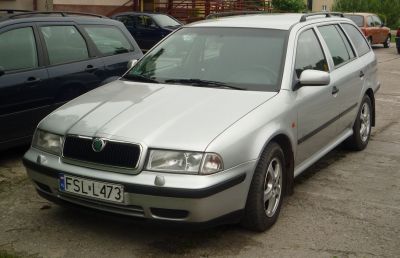
| Production: | 1996-2000 |
|---|---|
| Model Year: | 1996 |
| Length: | 4511 mm177.6 in |
| Width: | 1731 mm68.1 in |
| Height: | 1448-1481 mm57.0-58.3 in |
